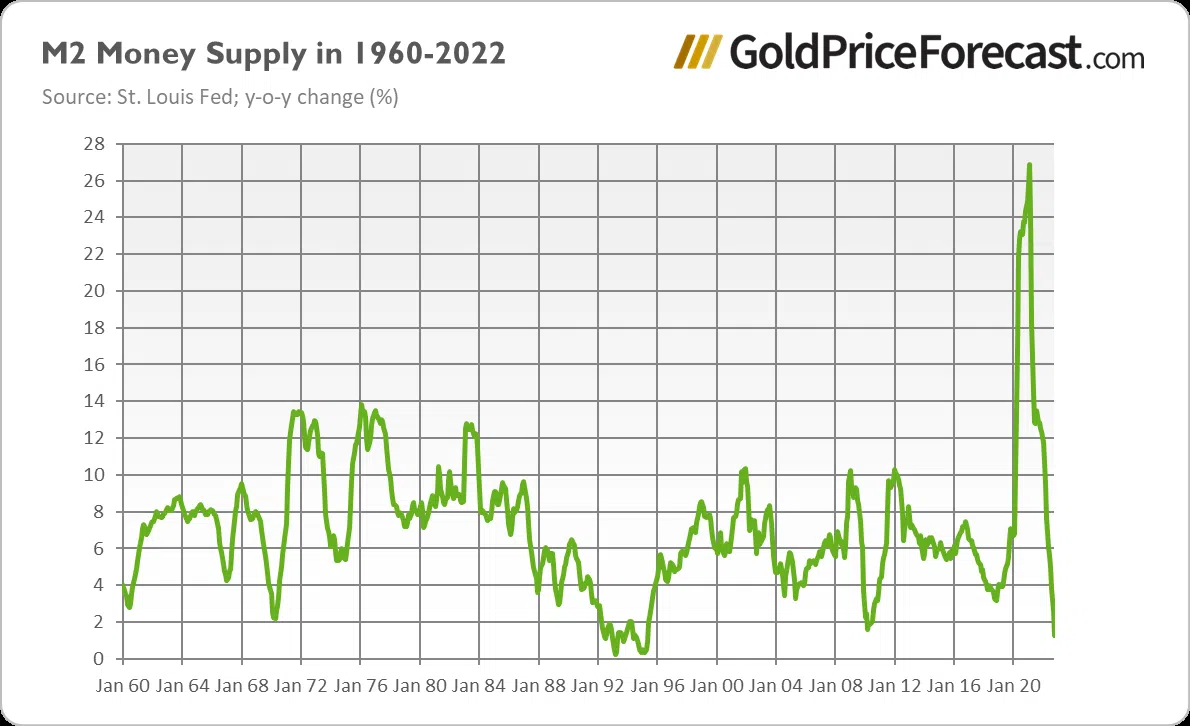Gold Outlook Improves As M2 Supply Growth Decelerates
The slowdown in the money supply growth continued in November, and it could be fundamentally positive for gold prices.
Is deflation coming? What, deflation?
I know that inflation is still obscenely high, but please take a look at the chart below, which shows the changes in the broad money supply . As you can see, the annual M2 supply growth pace has declined to 1.28% in November . It means that there has been a massive slowdown from the peak of 26.89% in February 2021.

What’s more, the growth rate not only decelerated to the pre-pandemic level, but it actually fell to the lowest number since May 1995. It’s still positive, but if the Fed sticks to its hiking cycle and quantitative tightening , the broad money supply could decline in absolute terms. In other words, it’s likely that the U.S. economy will experience monetary deflation in the first half of 2023.
Monetary Inflation Drives the Business Cycle
Although money is out of many mainstream macroeconomic models, monetary inflation (and interest rates) is the driver of the business cycle , with expansions fueled by fast monetary inflation and contractions occurring after the rate of money creation declines below a critical level. Hence, monetary deflation could trigger a recession , as with disappearing liquidity many investment projects won’t be finished. We are already observing how the slowing money supply growth burst the most horrendous price bubbles (the collapse of the crypto assets is not an accident). The monetary deflation could only intensify this process of market cleansing.
Implications for Gold
What does it all mean for the gold price outlook? Well, the trend in the broad money supply confirms the recessionary signal sent by the inversion of the yield curve . A recession is likely next year, which should be a very bullish event for gold prices . An additional tailwind will be the Fed’s pivot. It’s possible that gold is already smelling it – and this is why its price has increased above $1,700 recently, as the chart below shows.

It’s almost certain that a recession (possibly combined with a substantial decline in the CPI inflation rate ) will prompt the U.S. central bank to cut interest rates and reintroduce quantitative easing . I wouldn’t be surprised if all these factors pushed the price of gold to new all-time highs.
Arkadiusz Sieron, PhD